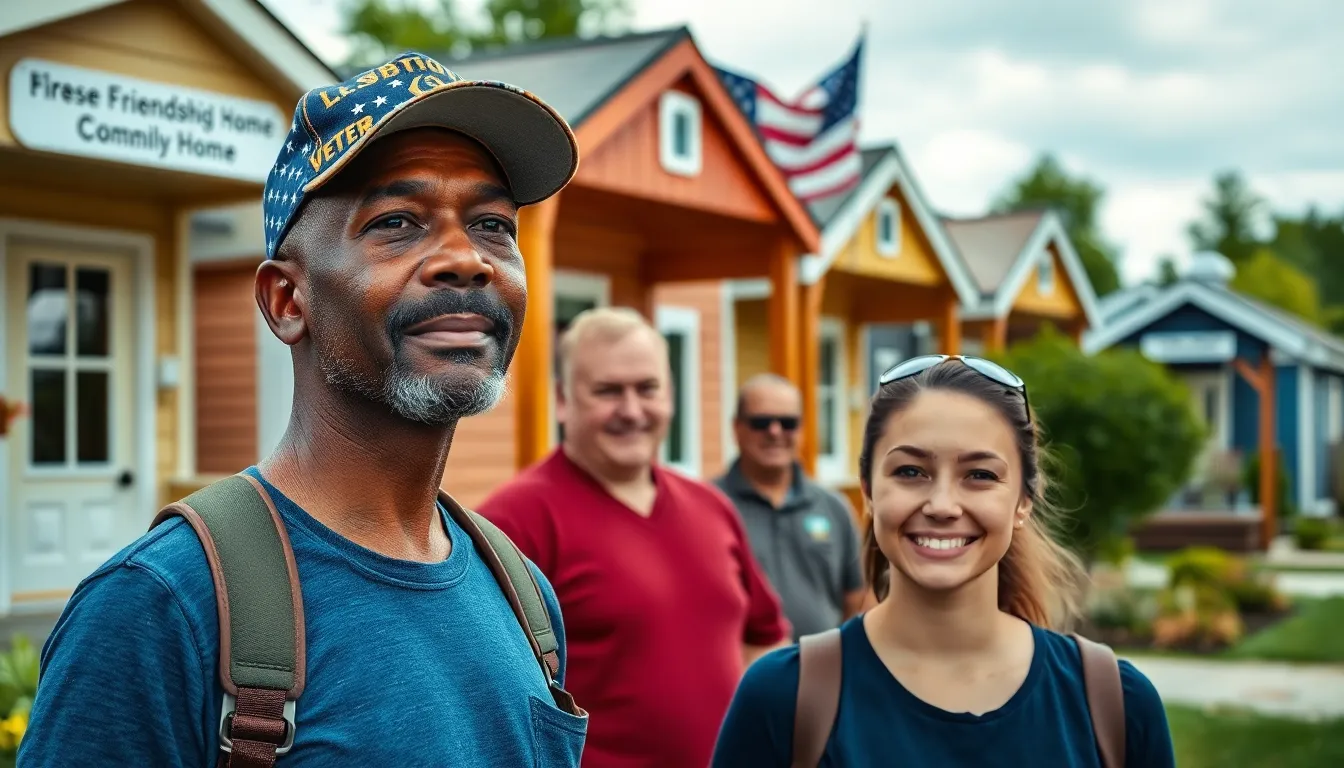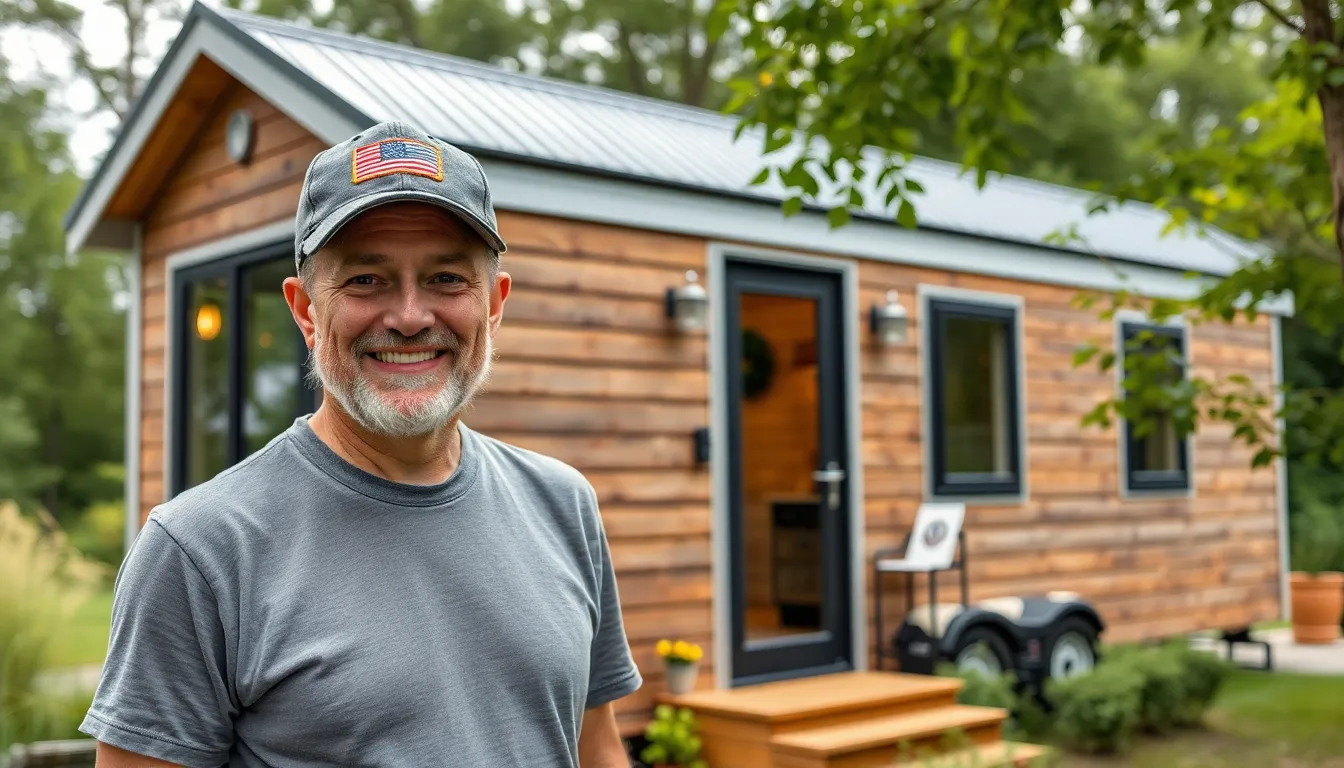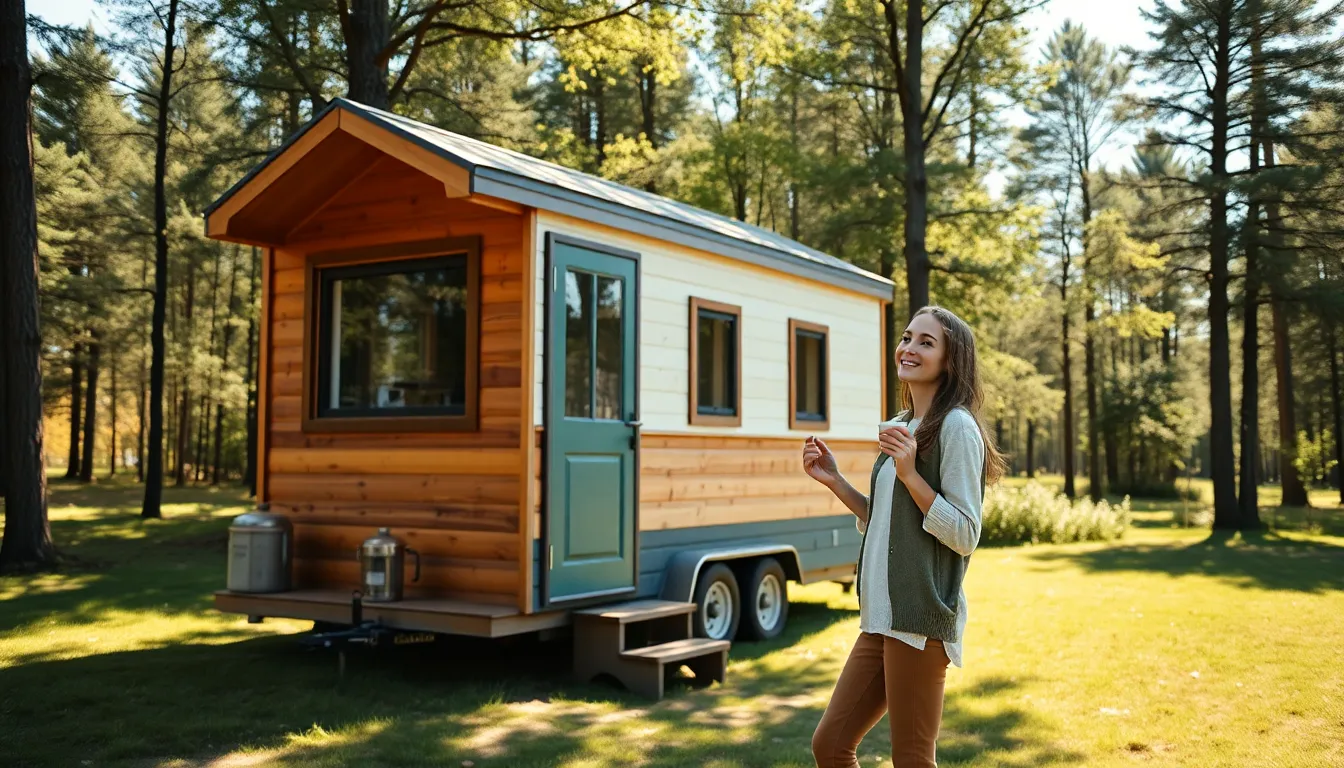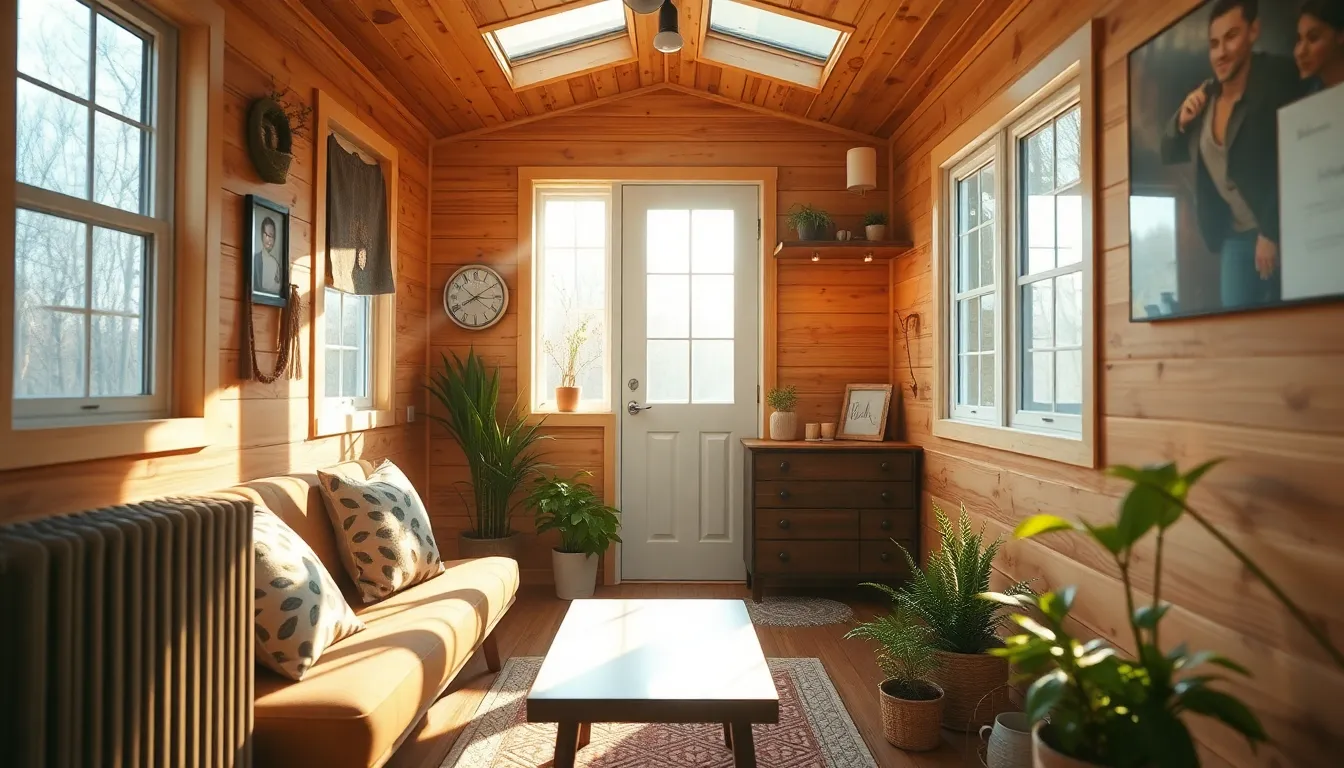In a world where bigger often seems better, tiny homes for veterans are flipping the script and proving that less really can be more. Imagine a cozy, efficient space designed not just to shelter but to honor those who’ve served. These pint-sized havens offer a perfect blend of comfort, community, and a dash of whimsy—because who wouldn’t want to live in a place that feels like a warm hug?
As veterans transition back to civilian life, the search for affordable housing can feel overwhelming. Tiny homes provide a refreshing solution, combining sustainability with a sense of belonging. With innovative designs and a focus on community, these homes are more than just a place to rest their heads; they’re a stepping stone toward a brighter future. So, let’s dive into the world of tiny homes and discover how they’re making a big impact for those who’ve given so much.
Table of Contents
ToggleOverview of Tiny Homes for Veterans
Tiny homes for veterans provide an innovative housing solution that addresses the unique challenges faced by those who have served. These compact dwellings emphasize affordability, sustainability, and a sense of community, making them an appealing choice for many. Such homes often come equipped with essential amenities to ensure comfort without unnecessary space.
Numerous organizations focus on constructing tiny home communities specifically for veterans. Collaboration between non-profits and volunteers frequently leads to the development of these housing projects. Not only do these communities foster a spirit of togetherness, but they also create safe environments that promote social interaction.
Accessibility remains a central aspect of tiny homes. Veterans can enjoy reduced utility costs due to efficient designs and materials. Smaller footprints decrease maintenance, allowing veterans to focus on their well-being rather than home upkeep.
Community support often evolves around these tiny home projects. Local organizations and volunteers frequently provide resources, mentoring, and assistance in the transition back to civilian life. Shared spaces encourage connections among residents, further enhancing overall quality of life.
Tiny homes represent a shift in how society views veteran housing needs. They serve as a practical solution to the affordable housing crisis while honoring the sacrifices of those who defended the nation. By prioritizing design and functionality, tiny homes empower veterans to create meaningful lives after service, contributing to their overall happiness and fulfillment.
Benefits of Tiny Homes for Veterans
Tiny homes offer numerous advantages tailored to meet the specific needs of veterans. These compact living spaces not only provide shelter but also serve as a foundation for rebuilding lives.
Affordability
Affordability stands out as a major benefit of tiny homes for veterans. These homes often cost significantly less than traditional housing, making them accessible to individuals with limited financial resources. Monthly housing expenses, including utilities, tend to be lower, allowing veterans to allocate funds to other important areas of their lives. Organizations focused on veteran support often partner with developers to create affordable tiny home communities. Such initiatives help lessen the burden of housing costs, offering veterans financial relief. Transitioning to civilian life becomes less stressful when housing security is attainable.
Mobility and Flexibility
Mobility and flexibility represent additional key attributes of tiny homes. Veterans can easily relocate their tiny homes, providing the freedom to choose desirable living environments. This adaptability supports changes in lifestyle or employment while maintaining a sense of stability. Many tiny homes offer lightweight design and use sustainable materials, enhancing portability. Accessing recreational areas or relocating closer to family members becomes feasible with a movable tiny home. Living in a tiny home encourages experiences over possessions, promoting a lifestyle that fits within budget constraints.
Community Impact
Tiny homes for veterans create significant community benefits, enhancing social ties and fostering resilience. By prioritizing support, these initiatives empower veterans to thrive in their new environments.
Building Support Networks
Support networks form through tiny home communities. Local groups often rally to assist veterans, organizing events that promote interaction and collaboration. Connections strengthen as veterans share experiences, leading to friendships and mentorship opportunities. Many neighborhoods establish resource-sharing systems, offering necessities like food, clothing, and job placements, ensuring that everyone feels supported. Emotional well-being improves significantly in such environments, enhancing the overall quality of life for veterans rebuilding after service.
Local Economic Development
Tiny home projects stimulate local economies. Construction creates jobs, benefiting contractors and workers within the community. As new residents move into these neighborhoods, they contribute to local businesses, driving growth and sustainability. Increased spending on goods and services encourages entrepreneurship, with many veterans opening businesses that cater to their peers. This revitalization develops stronger community ties and promotes a spirit of collaboration among residents and local organizations dedicated to veterans’ welfare.
Challenges Faced
Tiny homes for veterans face several challenges that can hinder their effectiveness as a housing solution. Understanding these obstacles is crucial for fostering successful communities.
Zoning and Regulations
Zoning laws often restrict where tiny homes can be placed. Communities sometimes lack policies that support tiny home initiatives, leading to complications in legal approvals. Local governments may impose minimum square footage requirements, conflicting with the concept of tiny living. Navigating these regulations can become a lengthy and complex process, preventing timely development of tiny home projects. Veteran-focused organizations must advocate for zoning changes to create more opportunities for veterans.
Funding and Resources
Funding these tiny homes poses a significant hurdle. Many organizations rely on grants, donations, and volunteer labor, which can be inconsistent. Competing for limited resources often complicates project planning and implementation. Additionally, veterans may struggle to secure personal loans for tiny homes due to financial constraints. Collaborative efforts among nonprofits, civic groups, and local businesses can enhance resource availability. Establishing sustainable funding models proves essential for long-term success of tiny home communities for veterans.
Success Stories
Numerous veterans have found new beginnings in tiny home communities, transforming their lives. In one remarkable instance, a Vietnam veteran moved into a tiny home after years of homelessness. This newfound stability allowed him to reconnect with his family and pursue hobbies previously sidelined by financial struggles.
Another compelling story comes from a group of veterans in a tiny home village. Collective support strengthened their bond and provided opportunities for mentorship and friendship. Regular community events fostered collaboration, leading to joint projects that improved their living environment.
An inspiring case illustrates the benefit of mobility. A veteran, after relocating to a tiny home, was able to accept a new job that better suited his skills. The flexibility offered by tiny homes enabled him to thrive in a supportive community while advancing his career.
Additionally, tiny homes adapt to veterans with diverse needs. One individual, a single mother and veteran, found a tiny home equipped with childcare support initiatives. This arrangement allowed her to balance parenting responsibilities and pursue education without overwhelming expenses.
Local organizations have played a pivotal role in these success stories. Volunteers often contribute their time and resources to ensure these homes meet veterans’ specific needs. Collaborations between nonprofits and civic groups help create sustainable funding, ensuring these projects can flourish and continue supporting veterans.
Beyond individual transformations, tiny homes positively impact entire communities. Economic stimulation occurs as veterans patronize local businesses, fostering a flourishing local economy. As veterans build new lives, they contribute to a sense of belonging and strengthen the fabric of their communities.
Conclusion
Tiny homes for veterans represent a transformative approach to housing that prioritizes affordability and community. By addressing the unique challenges veterans face as they transition to civilian life, these compact dwellings foster resilience and connection. The supportive environments created within tiny home communities not only enhance individual well-being but also stimulate local economies.
As more organizations collaborate to overcome zoning and funding hurdles, the future of tiny homes for veterans looks promising. This innovative housing solution not only honors those who served but also empowers them to build fulfilling lives. The growing movement around tiny homes exemplifies how society can come together to support veterans, ensuring they receive the respect and resources they deserve.









